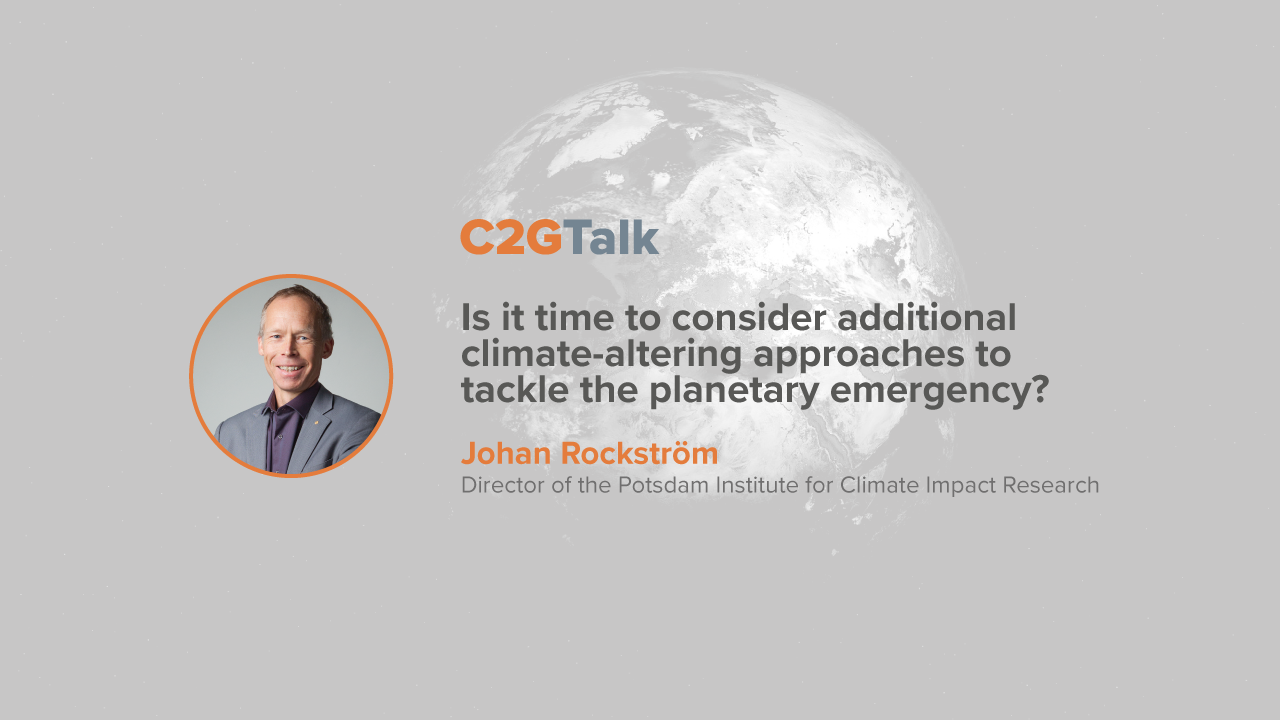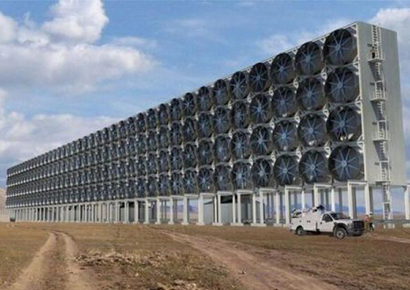Time to learn about all the options to tackle climate change

In 2015, as UN Assistant Secretary-General for Climate Change, I was part of the remarkable moment when the world came together at Paris, and committed to limiting global warming to well under 2°C.
It was the highlight of my thirty-year career in climate, which showed the world what multilateral diplomacy can achieve, especially when backed by political will.
Five years on, at today’s Climate Ambition Summit, world leaders are being asked to summon that political will again, to implement the provisions of the Paris Agreement, and in particular to increase their mitigation ambition by doing more, and more quickly. It is critical they do so.
Even amidst a global pandemic, carbon dioxide concentrations in the atmosphere are still rising, and the world is still far off making the promises of Paris a reality through transformative action.
Earlier this month, UN Secretary-General Antonio Guterres shared the chilling conclusion: “the state of the planet is broken”. On the current trajectory, we are still headed to temperature rise of over 3°C, which would be devastating for people around the world.
Even worse – we are learning how if we go beyond 2°C of warming, we risk triggering a cascade of effects that could irretrievably shift our planet to a hothouse earth scenario.
This is why my friend Johan Rockström, the renowned Director of the Potsdam Institute for Climate Impact Research, says it is time to declare a planetary emergency – and many agree.
There is some good news. A growing number of countries have committed to net zero emissions by around 2050 – a critical goalpost to achieve the Paris goals. We see societies and business around the world acknowledging the emergency, and seeking ways to address it – including through the international youth-led Fridays for Future movement, and the fast growing Race To Zero campaign, the “largest ever alliance committed to achieving net zero carbon emissions by 2050 at the latest”. [1]
But it is still not enough. Analysts say that even if all the net zero pledges made so far are met, warming by 2100 would be at least 2.1°C. And many countries are simply not taking the near-term action necessary to achieve those pledges.
The state of this emergency has become such, that in addition to urgent emission cuts, additional approaches are now needed.
According to the IPCC, all pathways that limit global warming to 1.5°C project removing billions of tonnes of carbon dioxide already in the atmosphere.
There are many ideas about how to do that, some nature-based, many requiring new technology. But none can deliver alone and none are ready at scale, and we do not have the governance frameworks in place to achieve this in a fair and sustainable way.
In case neither emissions reductions nor removals prove enough, there are also growing calls to consider the feasibility of additional measures, such as ideas to reflect sunlight back into space to directly cool the planet.
These additional approaches could have profound impacts – positive and negative – on the Sustainable Development Goals, and what come after them beyond 2030. To take the right decisions about these additional approaches, and whether to use or not to use them, we need to start building inclusive governance frameworks, and we need to start that process now.
Taking the next steps on climate action
That is why, five years on from Paris, I believe it’s time to take the next steps.
First, of course, the world must much more urgently cut emissions. Over the coming months, leaders must put the world on an irreversible course to decarbonisation. But emissions reductions alone will not be sufficient to reach the 1.5°C goal.
So second, the time has come for world leaders to urgently address the need for large-scale carbon dioxide removal (CDR).
The world needs to recognise the science that increasing climate ambition, and achieving net zero, requires action both on cutting emissions and removing billions of tonnes of carbon dioxide from the atmosphere.
CDR is needed to remove any emissions that remain by 2050, and then to remove more CO₂ than the world emits in the second half of the century.
This is a huge undertaking. Whether nature based or otherwise, it will need technology, know-how, and global monitoring reporting and verification. It will need massive finance commitments. And it will need much more understanding about complex linkages with the SDGs.
Third, given the risk that these actions won’t come at speed and scale needed, the time has come to learn much more about whether solar radiation modification (SRM) is feasible, if it could ever be an option or not, and what such decisions imply.
This is no easy matter. Taking decisions about SRM is linked to many other issues – including cutting and removing CO₂ emissions, adaptation, resilience, and efforts to achieve all the Sustainable Development Goals (and what may follow them).
Getting these decisions right requires a lot more research, and the creation of global governance frameworks to address the risks of using – or rejecting the use of – SRM approaches.
No more time to lose
In a planetary emergency, we no longer have the luxury to ignore exploring additional approaches to reduce risk. It is time to learn more, and to build frameworks to govern them – whether or not we decide to adopt them.
Leaders meeting in the Climate Ambition Summit today could help by recognising the need for CDR in the context of transformative emission reductions action and to help create the governance needed to make that happen.
One immediate potential action would be to create a forum that brings together governments, civil society and the private sector in one place to learn about, discuss and meet the CDR challenge.
There really is no time to lose. We are just about – but only just – in a position where we can still we avoid setting our planet upon an irreversible path towards a much hotter state of equilibrium. That would not be an easy place for humanity to live.
So I congratulate the hosts of this Climate Ambition Summit for keeping this work high on the international agenda, even amidst the COVID-19 challenge.
I applaud all countries, regions, companies, and individuals who have committed to net zero by mid-century. To that end, recent announcements by China and the EU have been crucial in building up momentum.
I also welcome US President-elect Biden’s commitment to re-join the Paris Agreement and to put the US on a path to achieve net zero emissions by 2050.
But in all cases, words are not enough: they has to be backed up by immediate action, including both a massive acceleration in emissions cuts, and steps to remove billions of tonnes of carbon dioxide removal part of this goal.
Over a lifetime in this field, I have seen both setbacks and grounds for encouragement.
We are lucky to have potential approaches at hand which could help stave off the worst outcomes. But we can no longer afford to let our hope cloud the dire nature of the emergency we are in.
We do not have the luxury of waiting any longer. It’s time to put the consideration of all options on the table.
_______________
[1] The Race to Zero campaign “mobilizes a coalition of leading net zero initiatives, representing 452 cities, 22 regions, 1,101 businesses, 45 of the biggest investors, and 549 universities. These ‘real economy’ actors join 120 countries in the largest ever alliance committed to achieving net zero carbon emissions by 2050 at the latest. Collectively these actors now cover nearly 25% global CO2 emissions and over 50% GDP.”


